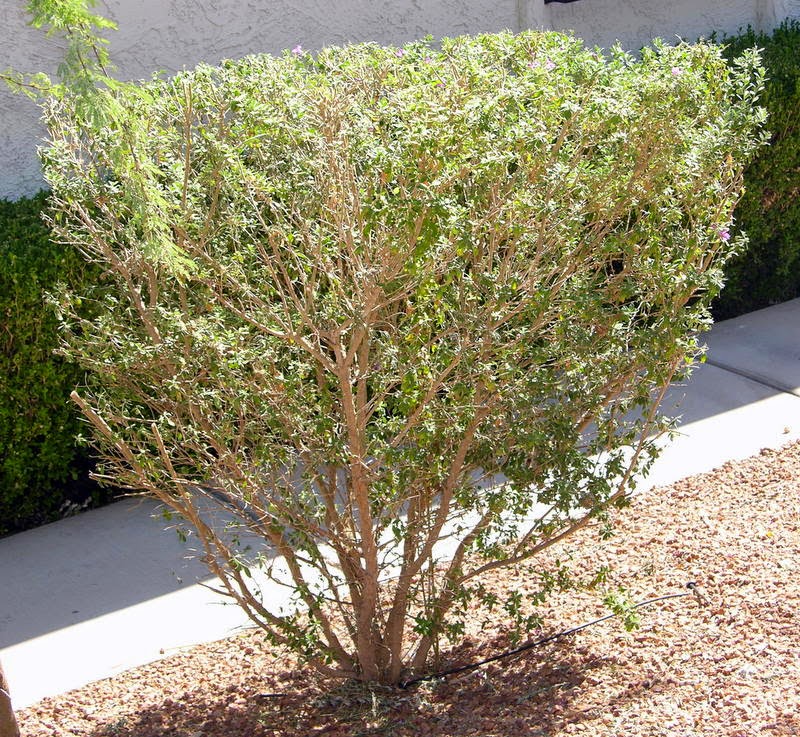Q. When is the right time to trim back the Desert Princess
flower and Purple Sage bushes and also how far down?
flower and Purple Sage bushes and also how far down?
A. I don’t know a plant called the Desert Princess flower.
If you can send me a picture maybe I will know it. I also do not know a plant
with the common name of Purple Sage. I’m wondering if this is Texas Sage or
Texas Ranger which is not a true Sage.
If you can send me a picture maybe I will know it. I also do not know a plant
with the common name of Purple Sage. I’m wondering if this is Texas Sage or
Texas Ranger which is not a true Sage.
 |
| Texas Ranger in Bloom. Prune this plant after it finishes blooming this fall |
The general
rule for pruning flowering woody plants is to cut them back after they finish
flowering. So if a plant normally flowers during the summer and fall months
then we would prune it back in the winter. If a plant normally flowers in the
early spring, then we cut it back in late spring or early summer when it has
finished flowering.
rule for pruning flowering woody plants is to cut them back after they finish
flowering. So if a plant normally flowers during the summer and fall months
then we would prune it back in the winter. If a plant normally flowers in the
early spring, then we cut it back in late spring or early summer when it has
finished flowering.
 |
| When plants like Texas Ranger get woody or leggy, remove one or two of the largest stems from the base. This is called gradual rejuvenation pruning. |
If these
are small flowering woody plants then we could cut them back to within a couple
of inches of the soil. If these are larger woody plants then we remove the
oldest or most woody stems deep inside the canopy.
are small flowering woody plants then we could cut them back to within a couple
of inches of the soil. If these are larger woody plants then we remove the
oldest or most woody stems deep inside the canopy.
When pruning in this way, it is
customary to remove no more than about one third of the total plant in a single
pruning. If the shrub is still unsightly or overgrown, the following year we
again remove one third of the shrub. In this way the shrub is in a constant
state of renewal with new growth coming from the bottom and older, larger
growth being selectively removed.
customary to remove no more than about one third of the total plant in a single
pruning. If the shrub is still unsightly or overgrown, the following year we
again remove one third of the shrub. In this way the shrub is in a constant
state of renewal with new growth coming from the bottom and older, larger
growth being selectively removed.